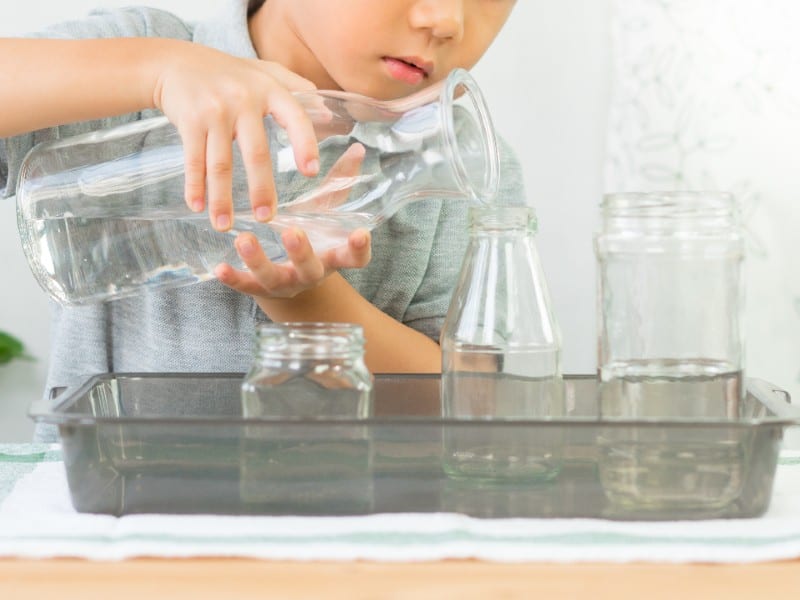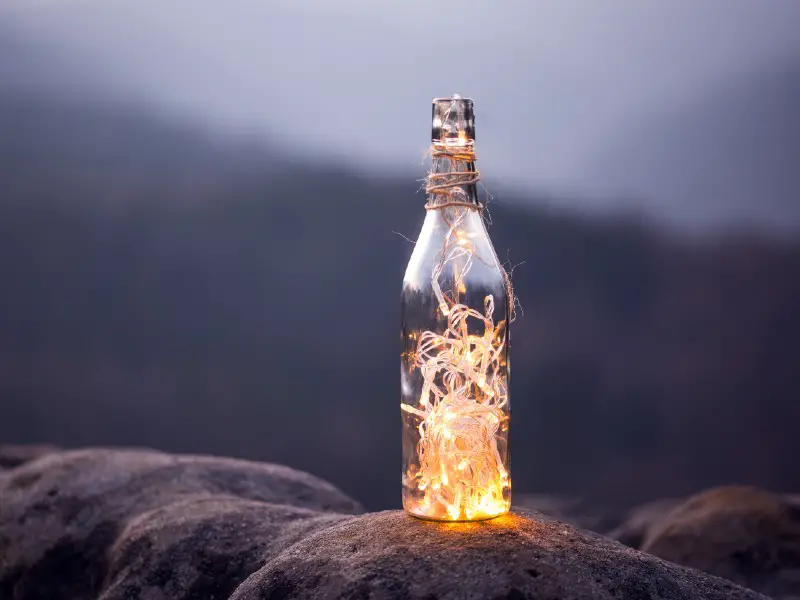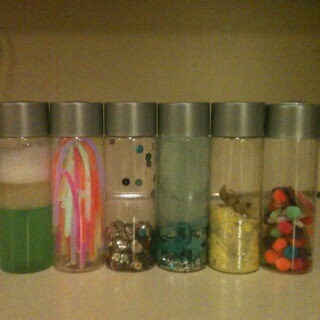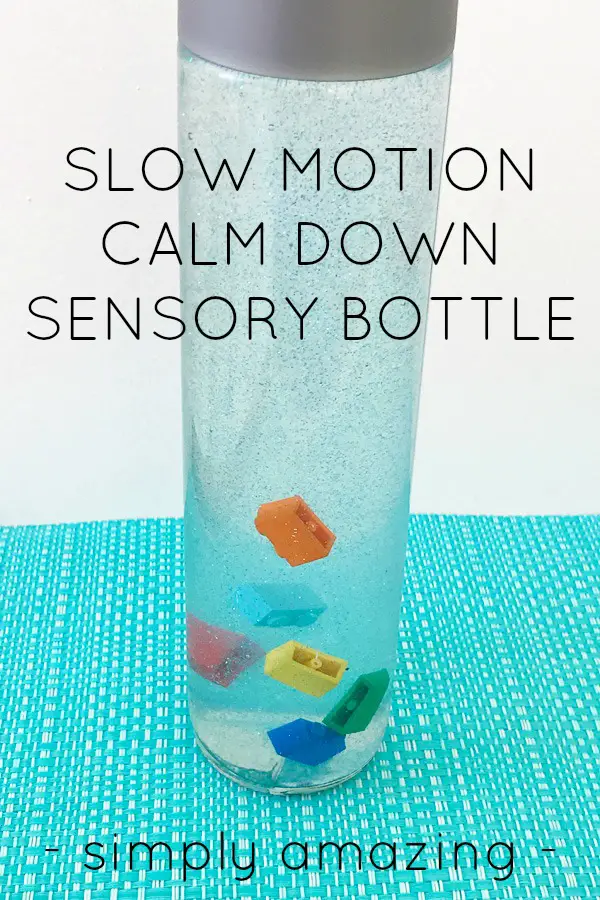Sensory bottles are growing in popularity with both parents and children. They are a wonderfully calming tool for children and can help with panic attacks or overload. They are also great toys for the car, or during quiet time. Many adults seem to enjoy watching them too!A good sensory bottle is perfect for many occasions, and they’re also really fun to make, so here are some suggestions for making a truly amazing one that you’ll want to keep for good.Let’s learn how to make sensory bottles!
Materials
 To create a sensory bottle, you are going to need:
To create a sensory bottle, you are going to need:
- A bottle
- Some liquid
- Some items to put inside
- Superglue
Let’s discuss those things in a bit more detail so you know how to choose, and then we’ll get onto ideas about the kinds of sensory bottles you might like to create.
Bottle
Getting the right bottle is crucial, and ideally, the recipient of the bottle should choose one they like, as it wants to be a shape that particularly appeals to them.For example, they may want a bottle that is rounded or one that is straight. Smooth edges, bobbly edges, or a sleek sweep to the top ““ everything will appeal in different degrees to different people.If your sensory bottle is intended for an adult, you may want to choose glass as the material, but if it’s for a child (especially a young child), you might feel plastic is a more suitable option. It will be lighter for them to hold, and won’t shatter if they accidentally drop it.Think about the lid, too. A sensory bottle is a whole experience, so the little details matter. You may find there are many kinds of bottles you can reuse, such as perfume bottles or water bottles, but whatever you pick, make sure that the aesthetics feel right and are pleasing. This will make a surprising difference.Feel free to use recycled containers ““ there’s nothing to say that the bottle must be specifically bought just for your project in order to be suitable. You can use anything. If it’s for a child, think about how easy the bottle will be to hold and whether they’re likely to be able to grip it easily.Always make sure that the lid will fit tightly onto the sensory bottle so you can seal it and avoid any leaks.
Liquid
What kind of liquid should go in the bottle? Well, it will depend a bit on the result you want to get out of it. You can just use plain water or water with food coloring in. The water lets you view the things inside with crystal clarity, while food coloring tints the sensory experience and makes it potentially more soothing.Bear in mind that if you put metal items in a sensory bottle full of water, they will rust.Mineral oil is another option you can choose. It will make the things in your bottle drift slightly more slowly when you tip it. If you’re including anything heavy, this may be a better option. Baby oil is another choice you can use, with a similar advantage.If you want to color the oil, you will need a specific dye, as food coloring will not mix with the oil ““ it’s water-based, and will end up beneath the oil no matter what you do. This can be a sensory experience in itself, of course, but it’s not going to work to alter the color.If you want something that flows even more slowly, you could use liquid soap. You can get clear liquid soap or choose a colored one, and this is a great option for jars intended to calm people down.You can also use other fillings, such as clear glue, corn syrup, or even things such as water beads. Get creative and try different things out ““ you’ll probably find yourself making sensory bottles for everyone you know, as there are so many possibilities with this craft.
Contents
What should you put in a sensory bottle? Well, you can choose just about anything that’s small enough to fit in the mouth of the bottle and move around inside it! Think about the recipient and the things they like.You can do a themed bottle, e.g. blue liquid and sea creatures, green liquid, and plant-themed contents, etc., or just create something that is pretty and appealing and soothing.Some people use sensory bottles as a way of keeping glitter they have already bought from getting into the environment and giving it a practical purpose. By sealing it in the bottle, you’re ensuring it won’t add to the issue of microplastics and creating something beautiful with it.You can also use beads, which look beautiful drifting around inside a bottle. Sand and confetti are other popular choices, as are shells, mini pom-poms, tiny toys (such as you might find in a dollhouse), or glow-in-the-dark stars.Further ideas include googly eyes, tiny pebbles, Lego people, loom bands, marbles, dry rice, or even tinsel. You can put almost any non-perishable item in the bottle, and it will create a great sensory experience as it drifts around.If your child is interested in magnets, you could add some magnetic things to the jar and show them how applying a magnet to the outside makes the contents behave. Remember, however, not to put metal in water or it will rust away quite quickly.
How To Get Started
The first step is to choose a bottle. Once you have one that you like, decide what you want to put in it and how quickly you want the contents to fall. If you want them to move slowly, it’s best to choose a medium bottle, whereas if you fill it with water and the contents move fast, you may want a larger container.Check that everything you want to include will actually fit through the mouth of the bottle before you get started ““ otherwise you may find yourself having to leave out things you’d planned to include before you can’t get them in.Before you start assembling the bottle, you should have made a decision about what liquid you are going to use and what you are going to put into the bottle.So, now you know about the different possibilities, let’s look at a few of the sensory bottles you might choose to make. Remember, you can deviate at any point and make the bottle your own (or for your child) with whatever preferences you have!Let’s look at making a glitter bottle first, as these are particularly popular.
Comments
0 comments



 Fun-A-Day’s
Fun-A-Day’s 


 Source:
Source: 

